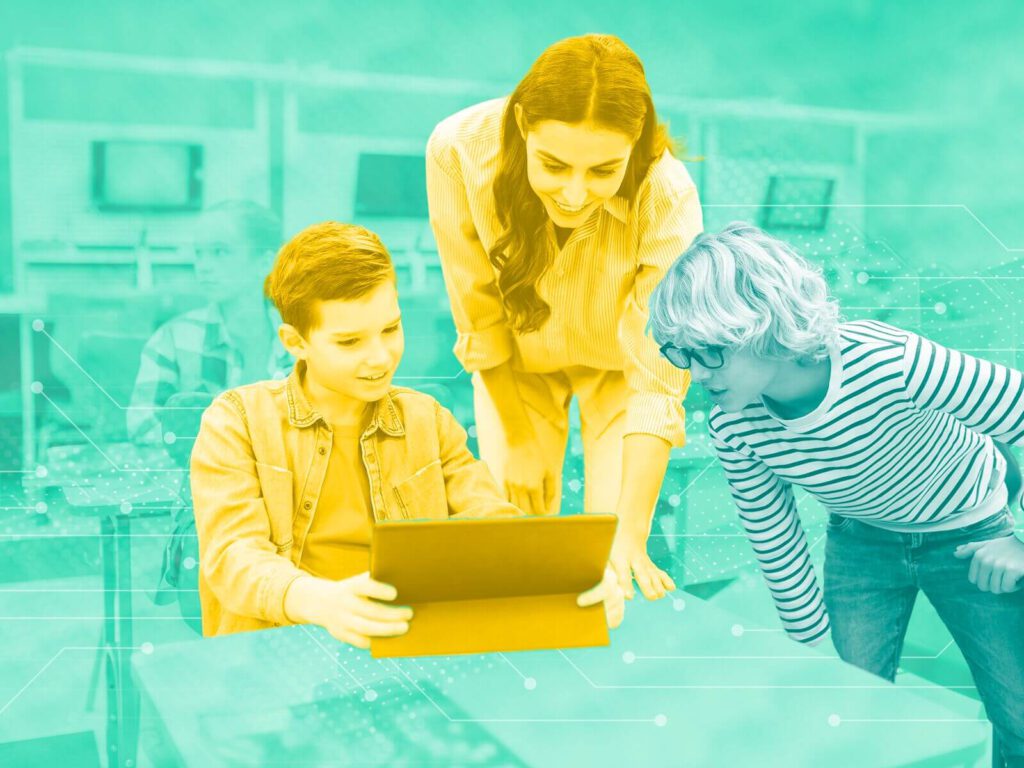The Internet of Things (IoT) is transforming many aspects of our lives, including education. This trend towards connecting non-computer devices is increasingly impacting schools and universities. You may have already noticed this, with many students using smartphones and tablets to connect to their classes.
As technology advances at a rapid pace, IoT is providing educational institutions with a variety of valuable tools that make campuses safer, learning more engaging, and teachers more efficient. In this article, we explore how IoT is being used in the education sector.
What is the role of IoT in education?
IoT plays a key role in education. A recent report by eMarketer Retail highlights that around 82% of children aged 12-17 own a smartphone and use it for both learning and entertainment. This generation is deeply connected to their devices, incorporating them into many aspects of their lives.
Despite concerns about safety and user protection, there is no denying the potential of IoT to improve education. One key benefit for teachers is the ability to track student attendance.
Strategically placed sensors in classrooms, libraries, cafeterias, etc. can transmit student location data to teachers, enabling them to accurately assess attendance. Additionally, IoT makes it easier for teachers to monitor virtual or remote classrooms.
Introduction of IoT in the education sector
Interactive learning
IoT offers a variety of applications that can make learning more interactive and engaging for students. Here are some examples:
Distance learning: IoT allows virtual classrooms to be accessed through televisions and mobile phones, allowing for continued education even when students are absent.
Immersive Learning: IoT-enabled graphic classrooms bring textbooks to life with 3D graphics, color, and sound for a more engaging learning experience.
Accessibility tools: Applications such as speech-to-text can help students take notes more efficiently.
Monitoring the health of students and staff
One way to improve productivity across an educational institution is to ensure the wellbeing of students and staff, which includes monitoring factors that can affect their health, such as sleep patterns and activity levels.
IoT devices can help with this by collecting physiological data that reflects a student’s health status. This data, stored securely in a database, allows medical professionals to analyze student health trends and identify potential problems.
Additionally, IoT systems can be used to store vital information like blood pressure, medical history, allergies, medication details, etc. This readily available data is essential in providing timely medical care in emergency situations.
Smart Board
One of the ways IoT is transforming education is through the use of smart boards. These electronic boards offer a variety of benefits to both teachers and students.
Easy to use and reliable: Smart boards are generally user-friendly and reliable, making lessons easy to set up and deliver. Enhanced interaction: Teachers can view and interact with images directly on the board, making lessons more engaging. Touchscreen functionality: Touchscreens allow teachers to modify content, move images and draw graphics to provide a more personalized learning experience. 3D object creation: Some smart boards also support smart pens, allowing students to create 3D objects with color and sound. Efficient note-taking: Speech-to-text functionality allows teachers’ lectures to be converted into notes and sent directly to students, saving time and improving accessibility.
Attendance and Examination Monitoring
Many schools require a minimum attendance rate for students to complete a semester, and IoT applications can automate attendance tracking using devices such as student ID cards and wearables.
This saves staff time and provides accurate data for reporting: students with poor attendance are automatically notified so the issue can be addressed.
IoT technology also allows students to take exams remotely. Special sensors on testing equipment track student movements and activities to prevent cheating, which is especially useful for distance learning programs and students with special circumstances.
Support for students with disabilities
One area where IoT is having a positive impact is education, especially for students with disabilities, whose specific needs are often overlooked by traditional educational tools. Here’s how IoT is helping:
Addressing dyslexia: IoT can be used to develop special applications to help students with dyslexia. These applications can convert oral lectures into text and allow students to read and understand the transcript. Assisting students with hearing impairments: IoT can be used to create text-to-speech tools for students with visual impairments. This allows students to access information they may have missed. Reforming education for students with visual impairments: Special apps designed for tablets use IoT to make education more accessible to students with visual impairments. These apps can be analyzed to further personalize and improve the learning experience.
Augmented reality
One of the ways IoT is being implemented in the education sector is through the use of Augmented Reality (AR). AR technology enables live interaction and allows audio, video, and graphics to be overlaid onto the real world. This can greatly enhance learning by bringing concepts to life in ways that textbooks and traditional lectures cannot.
For example, AR applications can project concepts into physical space, such as mapping distances directly onto the ground. This visual representation can help students grasp abstract topics and foster deeper understanding.
By incorporating AR into classroom sessions, educators can create interactive learning experiences that go beyond the limitations of traditional methods.
The Potential of IoT in Education
The potential for IoT in education is significant and continues to grow. New advancements are constantly emerging to personalize learning experiences, increase student engagement, and provide educators with new tools.
While data security and privacy remain important considerations, the potential benefits of IoT are clear: by adopting this technology, schools can create more dynamic and engaging learning environments, benefiting everyone.

